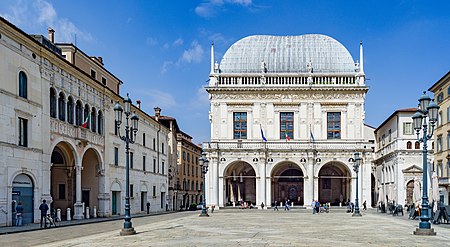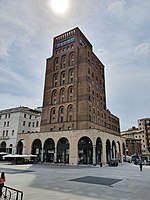Piazza della Loggia bombing
1974 crimes in Italy1974 disasters in ItalyBresciaImprovised explosive device bombings in ItalyMass murder in 1974 ... and 4 more
Neo-fascist attacks in ItalyTerrorist incidents in Europe in 1974Terrorist incidents in Italy in the 1970sYears of Lead (Italy)

The Piazza della Loggia bombing (Italian: attentato di Piazza della Loggia) was a bombing that took place on the morning of 28 May 1974, in Brescia, Italy during an anti-fascist protest. The terrorist attack killed eight people and wounded 102. The bomb was placed inside a rubbish bin at the east end of the square. In 2015, a Court of appeal in Milan issued a final life sentence to Ordine Nuovo members Carlo Maria Maggi and Maurizio Tramonte for ordering the bombing, closing one of the longest-running cases on terrorism during Italy's years of lead.
Excerpt from the Wikipedia article Piazza della Loggia bombing (License: CC BY-SA 3.0, Authors, Images).Piazza della Loggia bombing
Piazza della Loggia, Brescia
Geographical coordinates (GPS) Address Nearby Places Show on map
Geographical coordinates (GPS)
| Latitude | Longitude |
|---|---|
| N 45.53969 ° | E 10.220526 ° |
Address
Caffè della stampa
Piazza della Loggia 6
25121 Brescia (Zona Centro)
Lombardy, Italy
Open on Google Maps











